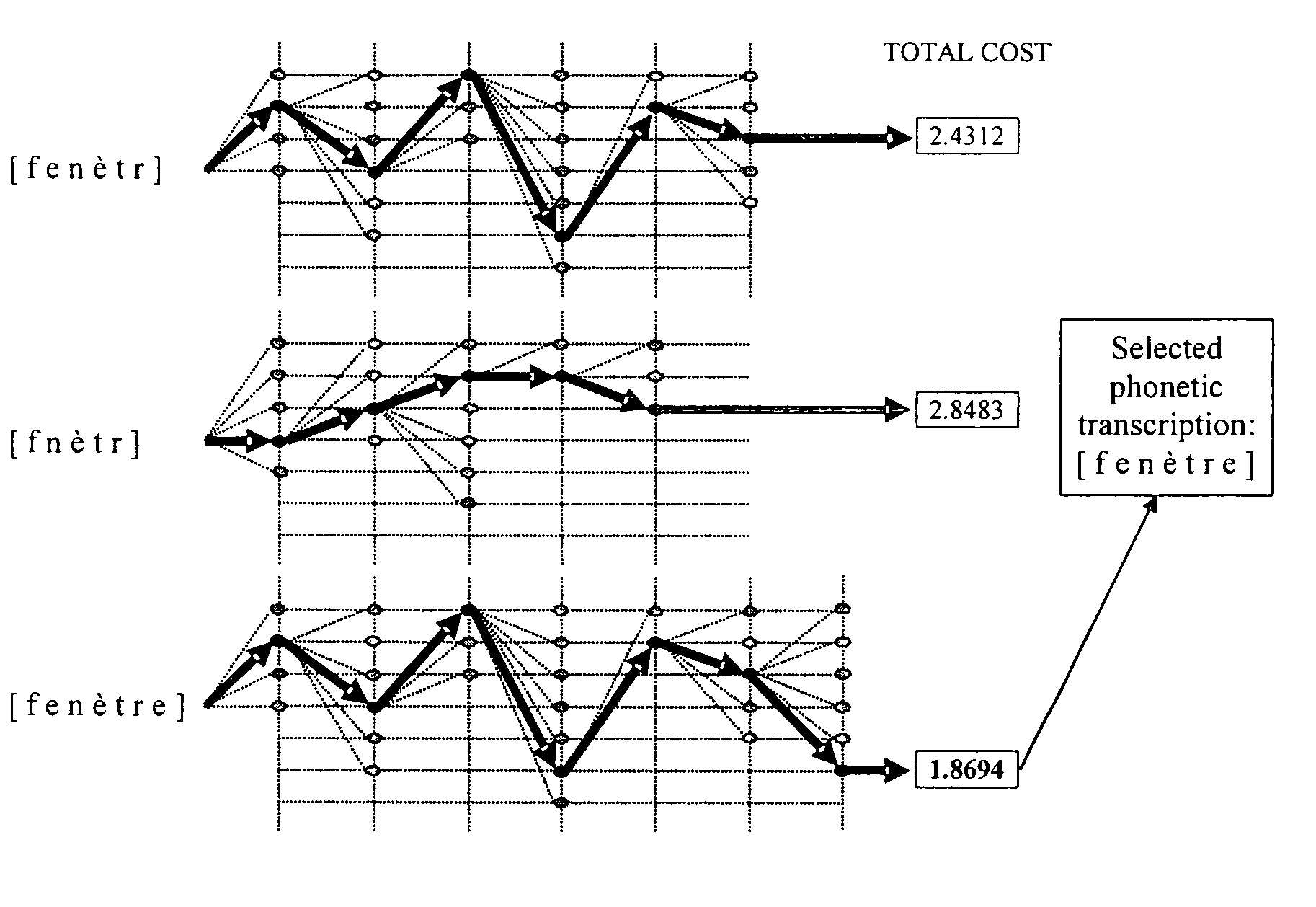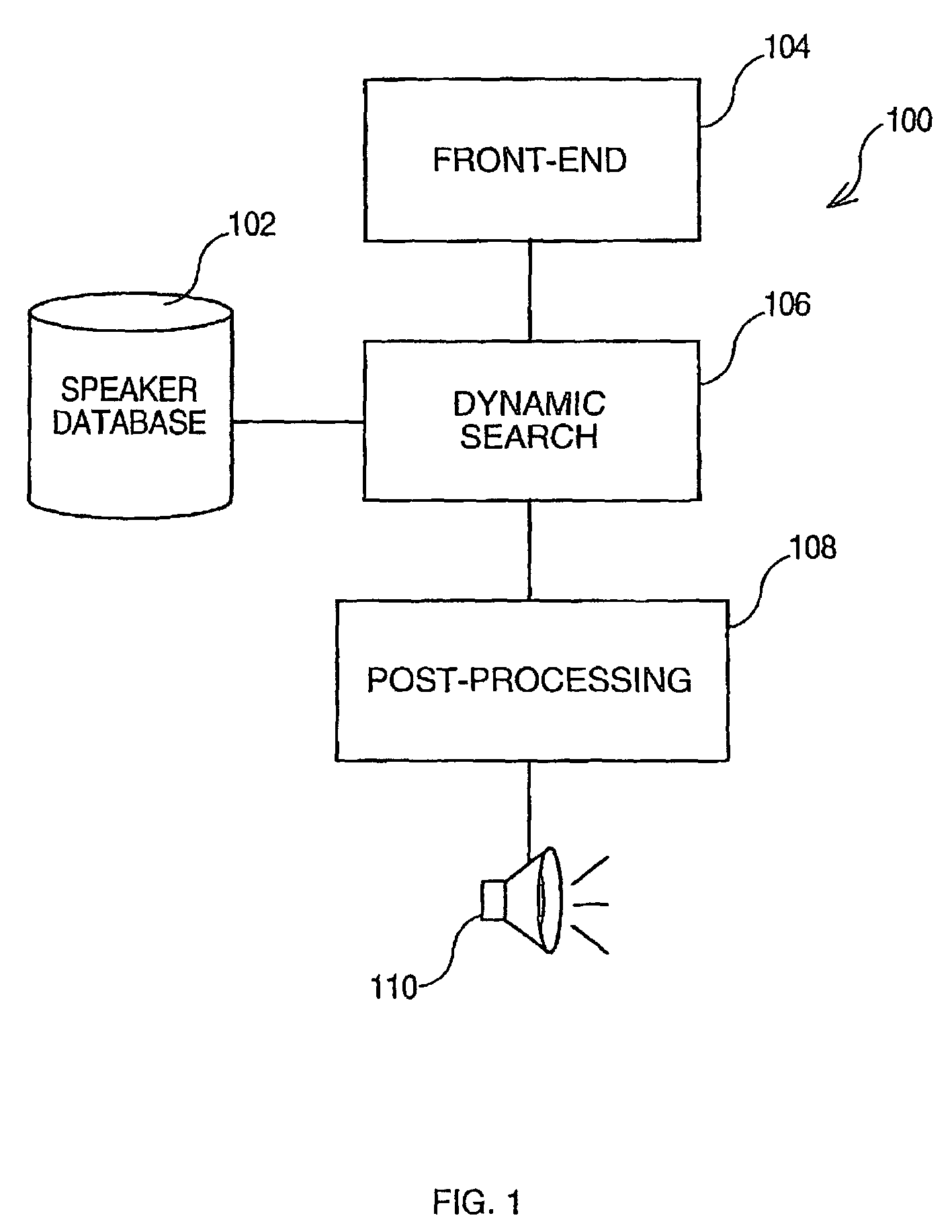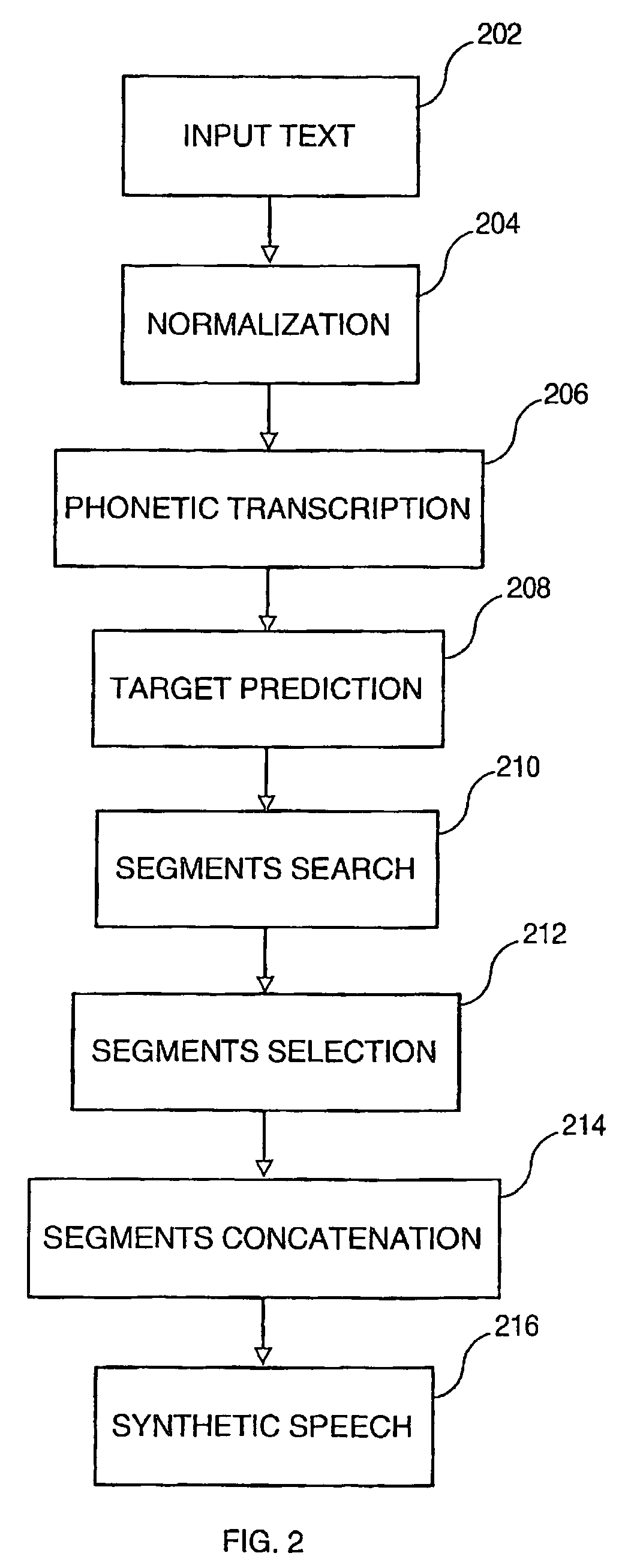Systems and methods for selecting from multiple phonectic transcriptions for text-to-speech synthesis
a text-to-speech and phonetic transcription technology, applied in the field of text-to-speech (tts) system, can solve the problems of degraded output signal or output lacking humanistic audio characteristics, time-consuming, time-consuming, etc., and achieve the effect of improving the quality of synthesized speech, saving processing, and reducing the number of artifacts
- Summary
- Abstract
- Description
- Claims
- Application Information
AI Technical Summary
Benefits of technology
Problems solved by technology
Method used
Image
Examples
Embodiment Construction
[0033]An exemplary Text-To-Speech (TTS) system according to the invention is illustrated in FIG. 1. The general system 100 comprises a speaker database 102 to contain speaker recordings and a Front-End block 104 to receive an input text. A cost computational block 106 is coupled to the speaker database and to the Front-End block to operate a cost function algorithm. A post-processing block 108 is coupled to the cost computational block to concatenate the results issued from the cost computational block. The post-processing block is coupled to an output block 110 to produce a synthetic speech.
[0034]The TTS system preferably used by the present invention is a concatenative technology based system. It requires a speaker database built from the recordings of one speaker. However, without limitation of the invention, several speakers can record sentences to create several speaker databases. In application, for each TTS system, the speaker database will be different but the TTS engine and...
PUM
 Login to View More
Login to View More Abstract
Description
Claims
Application Information
 Login to View More
Login to View More - R&D
- Intellectual Property
- Life Sciences
- Materials
- Tech Scout
- Unparalleled Data Quality
- Higher Quality Content
- 60% Fewer Hallucinations
Browse by: Latest US Patents, China's latest patents, Technical Efficacy Thesaurus, Application Domain, Technology Topic, Popular Technical Reports.
© 2025 PatSnap. All rights reserved.Legal|Privacy policy|Modern Slavery Act Transparency Statement|Sitemap|About US| Contact US: help@patsnap.com



